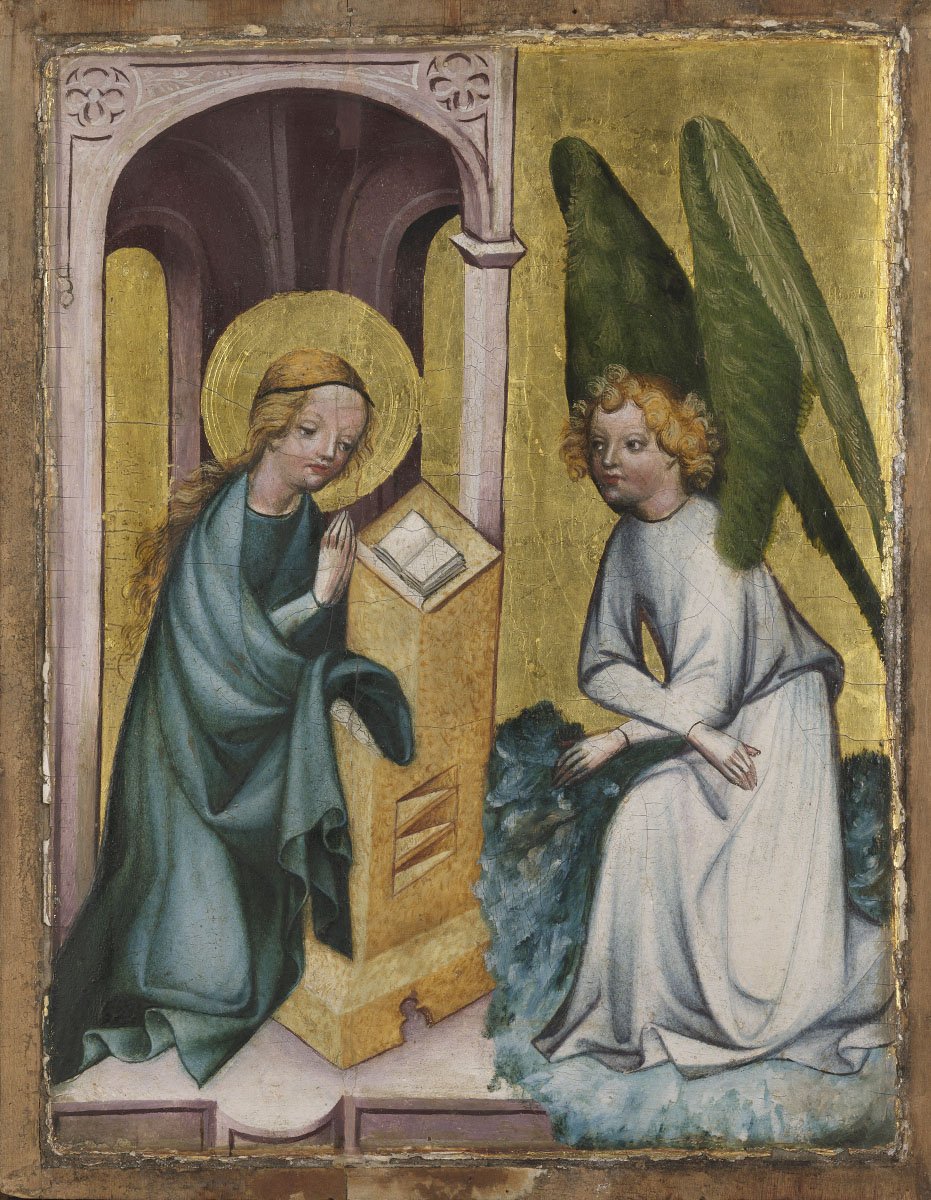
The Annunciation
Old Master Paintings
| Artist | |
|---|---|
| Culture | Italian |
| Date | ca. 1550 |
| Object type | painting |
| Medium, technique | oil on poplar |
| Dimensions | 175.5 × 142 cm |
| Signature | Signed on the vase: IL BRŌZINO / FIOR · F · |
| Inventory number | 163 |
| Collection | Old Master Paintings |
| On view | Museum of Fine Arts, First Floor, European Art 1250-1600, Gallery XVIII |
‘The human eye cannot see like this,’ stated Wölfflin, the authoritative art historian, of Bronzino’s art. And perhaps a healthy human mind cannot think so crookedly as Bronzino’s did, for this bizarre picture is able to jolt even today’s jaded viewer. A blatant dissonance lies between the brazenly indiscreet erotic content and the annoyingly restrained form. There is body, but no soul, no instinct, no passion, no torrid arousal. There is no flesh, for bodies are hard as marble and cold as ice, as every outline is mercilessly sharp – this is what Wölfflin meant. Nor is there blood in them, they are blindingly white, like gesso (indeed, that is what they are made of: the gesso ground vibrates from beneath the thin, transparent colours). The tyranny of intended artifice weighs the picture down with sadistic overtones.
The subject is no less contrived, in that the precise meaning of the picture, and that of its famous twin, the Allegory in the National Gallery in London, will perhaps never be unravelled. Whereas in the London image jealousy and fraud seem to triumph over love, here, in turn, desire seems happy, mutual, and the hideous monstrosity of Jealousy scurries away in the background. But in the laboured world of Mannerism, nothing is so simple. When looked under infrared light, it turns out that in the place of the children Eros and Anteros, representing requited love, there was originally a satyr baring its teeth with a demonic grin, similar to the mask beneath their feet.
Axel Vécsey
Pigler, Andor, Katalog der Galerie Alter Meister, 1-2. Museum der Bildenden Künste, Szépművészeti Múzeum, Budapest. 2, Akadémiai Kiadó, Budapest, 1967, p. 99-100.
Botticelli to Titian: Two Centuries of Italian Masterpieces, Szépművészeti Múzeum, Budapest, 2009, p. 396-397, no. 124.
Botticellitől Tizianóig: az itáliai festészet két évszázadának remekművei, Szépművészeti Múzeum, Budapest, 2009, p. 396-397, no. 124.
This record is subject to revision due to ongoing research.